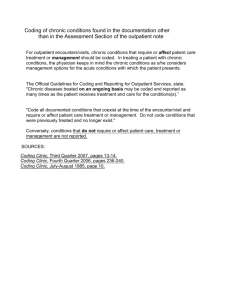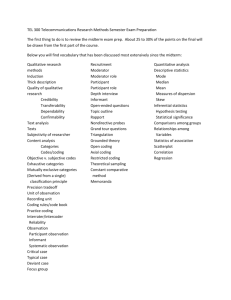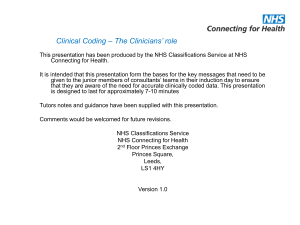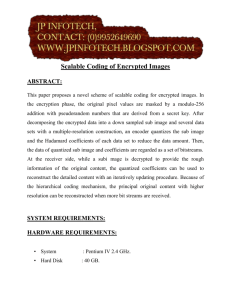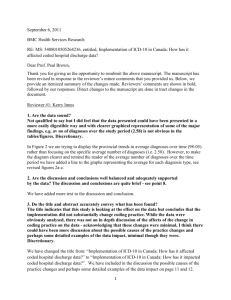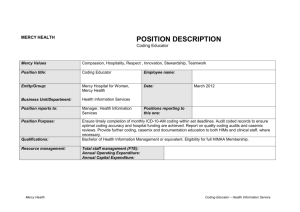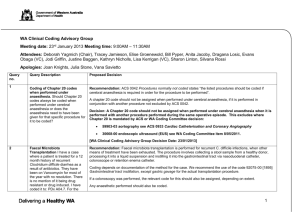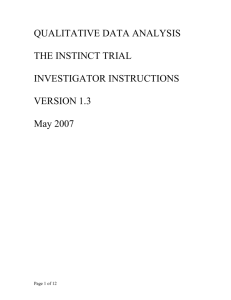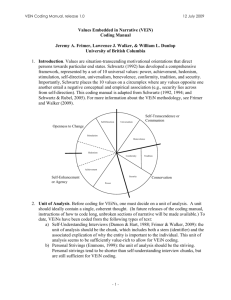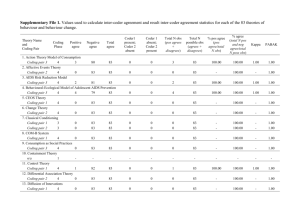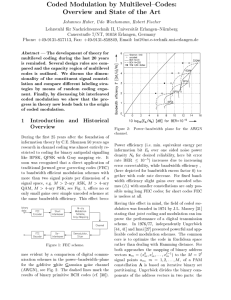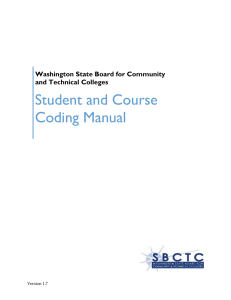ED 507 – Notes from Lindlof Ch 8 Categories and Coding
advertisement
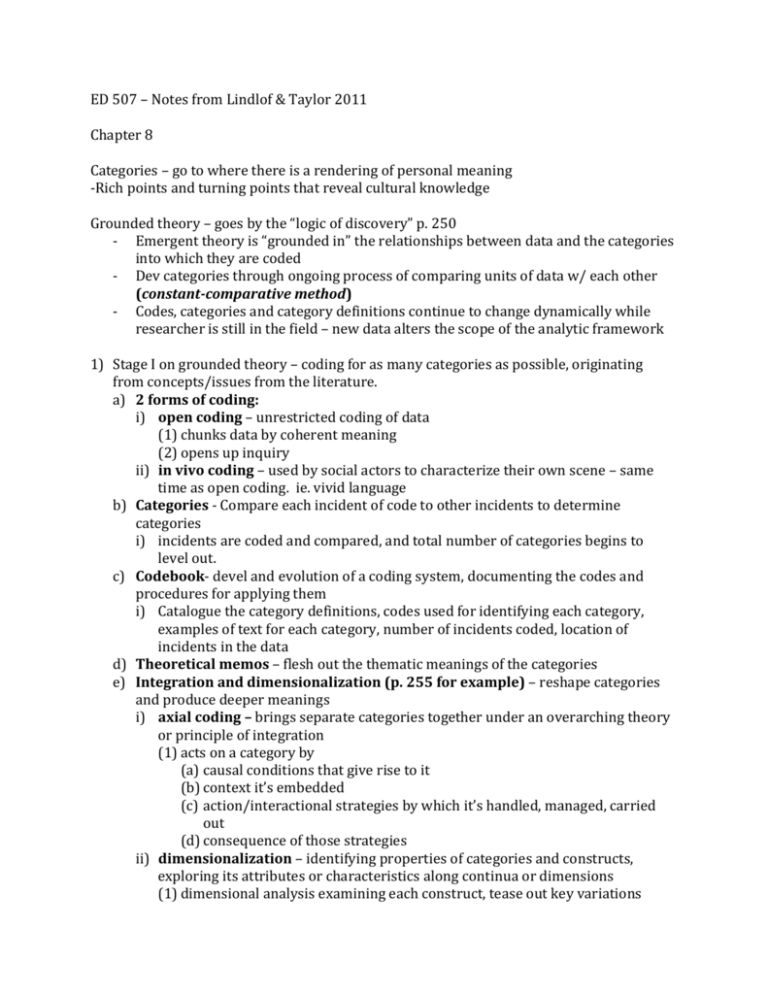
ED 507 – Notes from Lindlof & Taylor 2011 Chapter 8 Categories – go to where there is a rendering of personal meaning -Rich points and turning points that reveal cultural knowledge Grounded theory – goes by the “logic of discovery” p. 250 - Emergent theory is “grounded in” the relationships between data and the categories into which they are coded - Dev categories through ongoing process of comparing units of data w/ each other (constant-comparative method) - Codes, categories and category definitions continue to change dynamically while researcher is still in the field – new data alters the scope of the analytic framework 1) Stage I on grounded theory – coding for as many categories as possible, originating from concepts/issues from the literature. a) 2 forms of coding: i) open coding – unrestricted coding of data (1) chunks data by coherent meaning (2) opens up inquiry ii) in vivo coding – used by social actors to characterize their own scene – same time as open coding. ie. vivid language b) Categories - Compare each incident of code to other incidents to determine categories i) incidents are coded and compared, and total number of categories begins to level out. c) Codebook- devel and evolution of a coding system, documenting the codes and procedures for applying them i) Catalogue the category definitions, codes used for identifying each category, examples of text for each category, number of incidents coded, location of incidents in the data d) Theoretical memos – flesh out the thematic meanings of the categories e) Integration and dimensionalization (p. 255 for example) – reshape categories and produce deeper meanings i) axial coding – brings separate categories together under an overarching theory or principle of integration (1) acts on a category by (a) causal conditions that give rise to it (b) context it’s embedded (c) action/interactional strategies by which it’s handled, managed, carried out (d) consequence of those strategies ii) dimensionalization – identifying properties of categories and constructs, exploring its attributes or characteristics along continua or dimensions (1) dimensional analysis examining each construct, tease out key variations (2) “theoretically saturate” – new data adds little value to the concepts When to leave a research site 1) 3 tests of information sufficiency – that data collection work is nearing an end. a) taken-for-gratedness – researcher’s ability to grasp native meanings of communicative action, and no longer surprised or baffled by actions b) theoretical saturation - observation of what is already known c) heightened confidence – observations and findings faithful to empirical world, shed light on preexisting or emergent questions and propositions Interpretation 1) Constructing symbolic links –tropes- that tie first order meanings to second order concepts 2) Uses tropes to expand, concretize and emphasize meanings a) metaphoric – figurative frame b) metonymic – part is taken as emblematic representation of the whole domain c) ironic – inverts the normal meaning of another expression – ie. incongruity between widely accepted understanding and how the members actually behave i) **Could be a way to describe IW d) syntagmatic – culturally prescribed activity that describes a scripted pattern e) paradigmatic – contrasting elements of a cultural domain – where are the oppositional sets 3) Exemplars – incidents, episodes and strips – segments of data used to shape/advance an argument. can be: a) apt illustration – description of an event b) social situation c) extended case study – sequence of events involving the same actors and settings over a long period of time Nespore – Finding Patterns with Field Notes p. 303 – question how everyday things have come to be defined, who creates and sustains these definitions, how their boundaries are drawn and maintained, what people are trying to do by making abridged maps and structures, how these become stabilized in bureaucratic procedures and infrastructure, and whos interests are actually being served. How people account for things and communicate or miscommunicate with one another. Know how problems are produced, why and how some things are problems and others aren’t, why some things become public controversies and others, perhaps as important, do not. How they were made to be seen, felt, heard …how and wat we are expected and allowed to see.How are they constituted culturally and historically.



